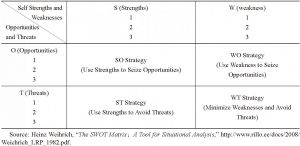论文
A Tentative Analysis of National Security Competitive Strategy
摘要
As interdependence among nations deepens and nuclear/cyber balance of terror worsens with globalization, power states find it increasingly difficult to acquire absolute security through launching large-scale wars.Against this backdrop, grapples between power states in national security arenas tend to take the form of peaceful competition.In other words, a nation would triumph over its competitor by killing the latter’s will to fight and by acquiring a relative competitiveness rather than by playing a zero-sum game.Well-developed Western competition theories and principles in business apply to handling national security affairs as well.In fact, this perception reveals that the fundamental purpose of devising national security competitive strategies is to employ, on the one hand, homogenous competitions to enhance a nation’s capability to engage its foe, and to use heterogeneous competitions to boost its capacity to prevail over its enemy on the other hand.In light of the current international situation, national security competition follows such principles as below: forge and maintain its distinctive values, strike a balance between costs and benefits, set priorities, integrate confrontation with cooperation, and combine homogenous competition with heterogeneous competition.When choosing a route path to national security competitiveness, power states should, first of all, adhere to a “take-the-lead” strategy in economic development, which serves as a cornerstone for achievement of national competitiveness.Compared with “increasing benefits”, “stopping losses” is the second important route path to ensuring competitive edge through minimizing the overall cost of national security operations.In addition, power states should make full use of such tactics as asymmetrical differentiation strategy, concentration strategy and corner overtaking strategy in stages of a strategic transition as these strategies are also conducive to creating competitive advantages.China’s preliminary approach to national security competitiveness has taken shape under the new conditions and attention should be given to the main three aspects of the approach: managing China’s own affairs well, strategically avoiding Sino-US confrontation, and accelerating the creation of China’s asymmetrical advantages to achieve an effective balance of power against the United States.
关键词
competitive strategy national security competitive advantage China’s strategic approach to competitiveness in national security
作者
ZHUFU Xiaofei Associate Senior Editor, Institute of World Economics and Politics, Chinese Academy of Social Sciences (CASS), Beijing, China.
检索正文关键字
论文目录
-
1 Approaches to Constructing Competitive Strategies and Their Implications
- 1.1 Attainment of Competitive Advantages as a Key Dominant in Prevailing in the Global Security Arena
- 1.2 Dependence of the Winning of Competitive Advantages of National Security on the Formulation of Competitive Strategies to be Employed
- 1.2.1 Gaining an Insight into Current Major Trends
- 1.2.2 Understanding International Patterns
- 1.2.3 Analysing Competitors
- 1.2.4 Using SWOT Analysis Method to Formulate Competitive Strategies for National Security
-
2 Major Principles in Carrying out Competitive Strategies for National Security
- 2.1 Maintaining and Shaping Unique Values
- 2.2 Balancing Costs and Benefits
- 2.3 Action in Inaction and Inaction in Action
- 2.4 Combining Competition & Confrontation and Mutually Beneficial Cooperation
- 2.5 Combining Homogenous and Heterogeneous Competitions
-
3 Choosing Appropriate Strategies to Gain Competitive Advantages Concerning National Security
- 3.1 Strengthening Economic Power as a Priority
- 3.2 Minimizing Total Cost
- 3.3 Differentiation
- 3.3.1 Emphasis on Asymmetry in the Leadership Strategic Thinking
- 3.3.2 Emphasis on Peak-shifting Measures in Policy Formulation and Implementation
- 3.3.3 Emphasis on Provision of Services Differentiated from Those Offered by Hegemonic States in Handling International Affairs
- 3.4 Concentration Strategy
- 3.4.1 Target Concentration Approach
- 3.4.2 Regional or Directional Concentration
- 3.4.3 Capacity Concentration
- 3.5 Corner Overtaking
- 3.5.1 The Fundamental Route Path to Corner Overtaking is Institutional and Technological Innovation
- 3.5.2 Pressure Creates an Incentive to Innovate
- 3.5.3 Innovation is Attributable to Penetrating Insight and Envisioned Planning
- 4 Preliminary Strategic Approach to China’s Competitiveness of National Security under New Conditions
- 5 Conclusion
相关文献
Denial” and “Fortress America”: Trump’s Grand Strategy
Autonomous Weapons in the Context of Global Security Governance
A Tentative Analysis of National Security Competitive Strategy
US Military Climate Change Risks Management and Its Behavioral Logic under the Trump Administration
查看更多>>>



